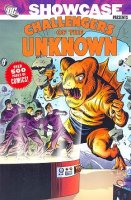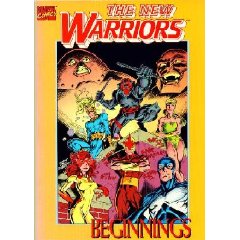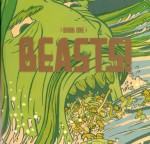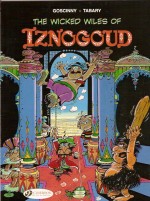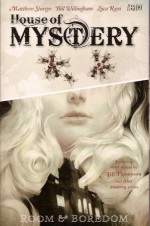
By Keiji Nakazawa (Last Gasp)
ISBN: 978-0-86719-594-1
As much a justified assault on the horrors of atomic weapons and the kind of people who could even contemplate using them as semi-autobiography, Keiji Nakazawa’s epic Barefoot Gen is an examination of hope and change; of cultures in drastic upheaval.
Volume 3 opens with Gen, his mother and newborn sister Tomoko resolutely seeking somewhere to shelter, or a permanent place to live. But everywhere they are confronted by exploitative greed, suspicion and even superstitious terror. Bomb victims, displaced and helpless, were considered to be tainted with invisible disease and worst of all “Bad Luck”.
They had found brief refuge with the widow Kiyo, a childhood friend of Gen’s mother Kimie, but were driven away by their saviour’s greedy children and embittered grandmother. But now after searching her conscience, Kiyo shrugs off the institutionalised deference to senior family and offers the refugees her storage shed as a house of their own. Delighted with so little a gesture, the family rejoices unaware of the depth of resentment their very existence seems to engender.
This attitude to the A Bombs’ survivors persisted in Japan for decades. Even now Hibakusha (“Explosion-Affected People”) have a dichotomous existence in Japan. They are revered, spoken of with polite deference, but acknowledged as being “different”. To many Japanese this is still a major problem: conformity is everything. They have the dubious honour of being sacred pariahs. Laws were passed regarding them and they are still tracked and monitored by the Government.
The Atomic Bomb Survivors Relief Law defined Hibakusha as those people:
- who were within a few kilometers of the hypocenters of the bombs
- who were within 2 km of the hypocenters within two weeks of the bombings
- who were exposed to radiation from fallout
- babies carried by pregnant women in any of these categories.
The Hibakusha get a monthly government allowance, but they (and their descendents) were and are often the victims of severe discrimination due to ignorance about radiation sickness, which people initially believed to be hereditary or even contagious, About 1% of survivors, certified as suffering from bomb-related diseases, receive a special medical allowance.
Most of them live in Japan, but thousands have escaped social stigma by moving to more hospitable places like Korea. Every year, on the anniversaries of the bombings, the names of Hibakusha who have died in the previous year are added to the cenotaphs in Hiroshima and Nagasaki. As of August 2008, the death tolls stood at 258,310 at Hiroshima, and 145,984 at Nagasaki.
Desperate to earn money Gen tries everything, and eventually is hired by a rich man to tend his younger brother, whose bomb-induced injuries are so disgusting that no member of the family can bear to be in the same room with him. In a truly stomach-turning sequence Gen befriends the bitter, hostile victim, but all his neighbours and even his family think he’s a monster and pray for his death – his nieces even offer to double his pay if Gen will kill their uncle….
Seiji Yoshida was a promising artist visiting Hiroshima at exactly the wrong moment. Now maimed, deranged, despondent and dying, he is inspired by the irrepressible Gen to find a way to paint again. But as the petty abuses and tyrannies of the villagers, street kids, bomb orphans and even police make every day a new trial, Gen and Seiji establish a doomed rapport… And among those bomb orphans is a little thief named Ryuta (see volume 2, ISBN: 978-0-86719-619-1), the spitting image in looks and character of Gen’s dead brother Shinji. Eventually the waif is convinced to join Gen’s family, but this good deed, too will not go unpunished…
Seiji’s radiation sickness has inexorably advanced: whilst taken on a jaunt in a handcart by Gen and Ryuta they stumble upon a military body disposal site. The sight of thousands of bodies burned in vast, callous pyres with no thought of human dignity engulfs the artist: delirious and enraged he grips his brush, determined to record the impersonal horror for the world to see. As ever the message is “if we know, we won’t allow it to happen again…”
The effort nearly kills him, and in the final stages of illness he removes his bandages and demands the children take him naked through village, defying the people who called him “monster” and tried to ignore the hideous consequences of the war. With Seiji’s death his family breathes an unfeeling sigh of relief, but his example has inspired Gen: one day he too will be an artist and finish the tragic artist’s work. He will record the truth of Hiroshima…
Akira Nakaoka was evacuated from the city before the bomb hit. All this time he has been “safe and well” in the country, working on a state farm in Yamagata. Or so Gen thought. As with so much the government proclaimed, the truth was painfully different. Starved and beaten, used as slave-labour, the children of the farm get a rude awakening when the new of Japan’s surrender reaches them on August 15th. Abandoned by their teachers they drift away, back to Hiroshima…
Stuffed with broad humour to leaven the dire situations, Life After the Bomb uses the hardships and brutality of the aftermath to further hone Gen into a valiant, self-reliant, eternally optimistic character, capable of unrelenting compassion and empathy even as he learns new tricks to relieve the “haves” of what his family “has not”; a terrifyingly resilient fighter (the amount of physical abuse he takes and hands out would make Bruce Willis fans wince) always ready for trouble whilst looking to a brighter tomorrow. But there’s much more horror and tragedy to endure before that day dawns…
Barefoot Gen is a series that should be mandatory upper school reading (with proper adult supervision) but I should mention a rather obvious cultural difference that English speakers seem to think of significant import: in many countries nudity and coarse language are not the almighty taboos they are here.
The Japanese do not share our view of the human body and they acknowledge that kids know and use the occasional cuss-word when we’re not listening. Barefoot Gen is an earthy, human masterpiece about real people enduring and overcoming one of the greatest atrocities in the history of civilisation. To forego this incredible reading experience because of a four-letter word or a coyly drawn willy is just bloody stupid…
© 2008 Keiji Nakazawa. All Rights Reserved.



